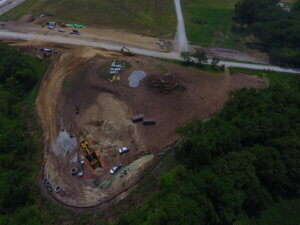Capital Improvement Planning for Small Towns
For many small communities, creating an initial Capital Improvement Plan (CIP) can seem like a daunting task. However, beginning the process using a practical and comprehensive approach is the key to success. Listen in as Municipal Engineering expert, Nate Carhoff, P.E. explains how our team guided the city leaders from Pleasantville, Iowa through the creation of their first CIP. Our all-encompassing strategy included input from all city departments and considered their primary budgetary “needs,” along with their long list of “wants.” This thoughtful and efficient process has positioned the community for long-term success and created a framework for future Capital Improvement Planning.
City of Pleasantville Case Study
I was going to talk a little bit about the City of Pleasantville in Marion County. A lot of small communities will probably hear us talking about capital improvement planning and be thinking, man it’s going to cost a
lot of money and a lot of time commitment. It can be a lot of work up front but once you get that document created the updates can be relatively inexpensive and easy going forward.
With the City of Pleasantville, we did a pretty sophisticated document. We covered all of their departments: administration, police, parks, streets, stormwater management, all the way through the community recreational facilities. I don’t think we spent a whole lot of money. I think our total fee on that was about $7,000. That included four meetings and then maybe a couple of conference calls back and forth.
It doesn’t have to be a super elaborate document. We did an executive summary at the front where if you read that you pretty much know everything, all the needs of the community, all the funding sources available, and the unmet need. It can be very comprehensive for a relatively low amount of investment upfront.
Then going forward, if we update that every two years, three years, five years, that document can be easily modified or added to. For example, in Pleasantville, we didn’t do those exhibits. Each project had a cost opinion to it but we didn’t go through and put a picture to the project. That’s something that we could certainly add to later and also incorporate into their GIS database with shapefiles, as far as year one, year five, or put an actual 2022 project on it. That was just what I wanted to add, is the investment doesn’t have to be a huge amount of money but the benefit is really great.

Nathan Carhoff, P.E.
Civil EngineerNathan Carhoff, P.E.
Civil EngineerHighway and Street Design, Transportation Planning, Municipal Engineering, Funding Procurement, Trail Design, Pavement Management

